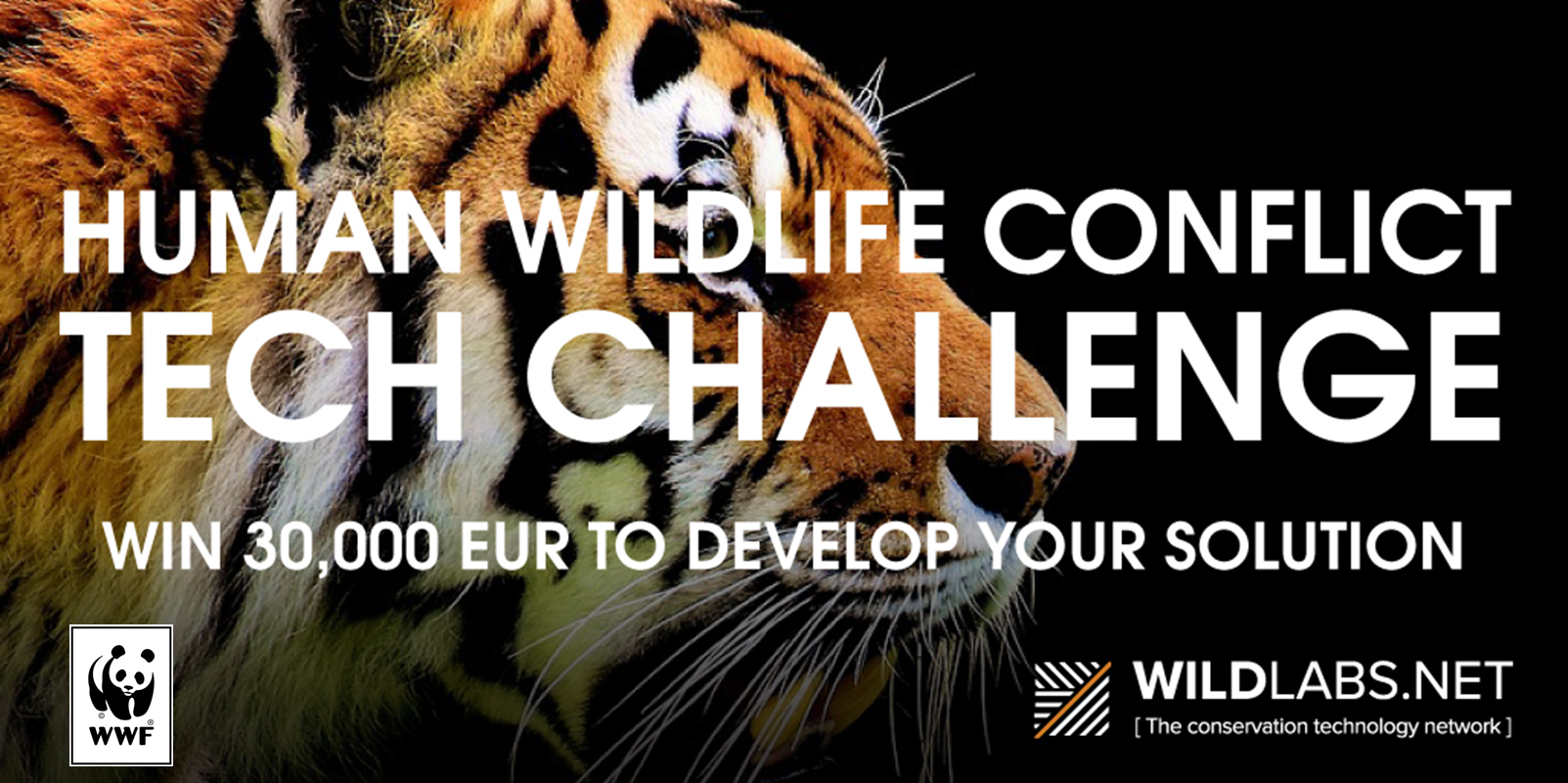In India alone, an average of 400 people and 100 elephants are killed every year as a result of human-wildlife conflict. In the past four years, 101 people have also lost their lives to tigers in India. In the Arctic, hundreds of 'conflict polar bears' have been killed over the last two decades. These species are all listed as vulnerable or endangered on the IUCN Red List.
We need better solutions, but we need help to create them. So WWF and WILDLABS challenged technology developers, engineers, designers and nature lovers to develop a new or improved tool to prevent conflict between people and wildlife, offering two prizes of €30,000 for the best solutions.
We put the call out and our community responded tremendously. We received 47 innovative ideas originating from 14 countries to help solve the increasing confrontations between people and wildlife such as tigers, polar bears and elephants. An international panel of human wildlife conflict and technology experts assessed the feasibility of the proposals and selected the two winners.
We are delighted to announce that British conservation technologist Alasdair Davies and the Dutch team of Laurens de Groot and Tim van Dam are the winners of the first international Human Wildlife Conflict Tech Challenge. Each winner will receive €30,000 to further develop and field test their solution for human-wildlife conflict.
Improved Effectiveness of Electric Fences: Laurens de Groot and Tim van Dam, the ShadowView Foundation
Laurens de Groot, Tim van Dam and the team from the ShadowView Foundation aim to reduce conflict between people and elephants using the wireless LoRaWAN™ (Long Range Wide Area Network) telecommunication technology. A variety of sensors can be linked to this network that detect animal presence and power leaks in electric fences that are being used to keep out elephants. Alarms linked to the sensors alert people by setting off buzzer flashlights or sending SMS messages, to warn villagers when a fence has been damaged or broken by elephants.
Image below; Laurens de Groot and Tim van Dam from the ShadowView Foundation

Competition judge Mohanraj from India is enthusiastic about the possibilities in the field:
“LoRaWAN™ based network technology is the future. It will enable us to integrate various systems monitoring species movement, voltage on fences and other important variables. Europe and especially the Netherlands are frontrunners in this technology and I’m very excited to see this applied in elephant conservation in India.”
Eric Becker, WWF Conservation Engineer and a judge for the HWC Tech Challenge, is likewise excited by the winning proposals:
"The technology industry's focus on machine learning and the internet of things is providing breakthrough technologies that have the potential to be game changers for conservation. Alasdair and Shadowview's innovative proposals combine machine learning and IoT networking technology with low cost sensors, enabling the devices to be applied to a variety of species monitoring and security applications. This is exciting for us because the technology has the potential to improve protected area management globally."

Early Detection of Carnivores: Alasdair Davies, the Arribada Initiative
The innovative early warning system proposed by Alasdair Davies and his team at the Arribada Initiative, is aimed at the early detection of carnivores like polar bears and tigers. It uses a clever combination of traditional infrared sensors and thermic sensors capable of discriminating between species, allowing it to alert people to the presence of a specific animal, but not when a human or a dog passes.
Image below; Rachael Kemp and Alasdair Davies from the Arribada Initiative

As Alasdair explains:
'We plan to use a new type of infrared sensor to detect the body heat of individual species – something that was previously impossible to do. Traditionally, infrared sensors have been used in home / office security to detect if burglars have entered a room, but they aren’t very clever – they can’t tell what has actually been detected, so if a pet dog or cat enters the room, they would still trigger (which isn’t very useful).
'The new type of infrared sensor detects body heat, but it transforms what the sensor can “see” to detect the shape, size and even the direction that an animal is moving. Because we can generate an image of what we’re looking at, we can now identify the exact species and tell the difference between an elephant or a tiger for example.
'By attaching these cheap and simple sensors to fence posts, we can alert people to the presence of a particular species in both day and night.

Next Steps: Exploring Collaboration and Initial Field Tests
The winners proposed complementary approaches, meaning that by working together they can reinforce the effectiveness of their tools. Both winners were excited by the possibility of collaboration and eager to tap into the ideas and energy of the broader conservation technology community here on WILDLABS over the next year as they move forward with their desing process.
Alasdair said, "I'm absolutely thrilled to win this award and plan to develop the carnivore early warning system openly with the ShadowView Foundation and the entire WILDLABS community. Winning this WWF/WILDLABS award is particularly special to me as it opens the door to solving conservation technology challenges together as a community, not just as individuals. I feel that’s incredibly important if we want to have the greatest impact.'
With the support WWF landscapes teams, the first step for the winners will be field tests in India in 2018. The teams will share regular updates from their field tests through the updates here on WILDLABS.


Add the first post in this thread.